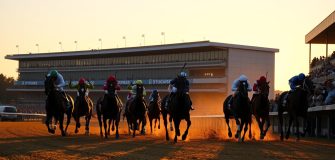Optimizing Seasonal Race Performance for Runners

Optimizing Seasonal Race Performance for Runners

Every runner dreams of crossing the finish line feeling strong and accomplished. To make that happen, smart planning matters just as much as daily training. Structuring events throughout the year helps athletes build endurance progressively while targeting peak results during priority competitions.
Experts recommend dividing races into three tiers: A (main goals), B (practice events), and C (low-pressure tune-ups). This approach lets runners focus energy on key dates while using other events to test strategies or gauge progress. Aligning workouts with this schedule ensures fitness peaks when it matters most.
Timing plays a surprising role, too. Studies show spring events often see slower finish times—daylight saving shifts disrupt sleep patterns and circadian rhythms. While this challenge can’t be avoided, understanding it helps athletes adjust their preparation.
In the following sections, we’ll break down proven training methods, scheduling hacks, and race-day tactics. Whether you’re chasing a personal best or tackling your first major event, these insights will help you train smarter and perform better when it counts.
Understanding the Importance of Seasonal Race Scheduling
Success in endurance sports isn’t just about training hard—it’s about training smart with a clear roadmap. Organizing events into priority tiers helps athletes avoid burnout while building toward their biggest goals. This method, borrowed from cycling and triathlon coaches, ensures energy is directed where it matters most.

Defining Race Priorities: A, B, and C Events
Top-tier “A events” demand peak readiness. Athletes taper workouts in the final weeks to arrive fresh, focusing on specific conditions like course terrain or weather. These are the main targets where personal records are chased.
“B events” act as dress rehearsals. Runners might experiment with pacing or nutrition strategies here, using results to adjust their training. These competitions provide valuable feedback without the pressure of all-out effort.
Low-stakes “C events” serve as training tools. Jogging a local 5K or joining a charity run maintains motivation while letting the body adapt to race-day routines. They’re perfect for building confidence without recovery setbacks.
Aligning Training with Key Event Timing
Research reveals timing impacts results more than many realize. A study on daylight saving shifts found finish times slow by 2-3% during the “spring forward” week due to disrupted sleep cycles. Scheduling A events 3-4 weeks after major time changes helps the body adjust.
Other timing factors include:
- Placing highest-priority events during natural fitness peaks
- Allowing 10-14 days between hard efforts for recovery
- Avoiding back-to-back competitions that cause cumulative fatigue
By syncing calendars with biological rhythms and training phases, athletes maximize their readiness when the starting gun fires.
Building a Year-Round Training Framework
Effective training frameworks blend structure with flexibility to adapt to changing needs. A smart roadmap balances challenging workouts with rest, ensuring steady progress toward goals. This approach helps runners stay injury-free while building the stamina needed for target events.

Establishing a Balanced Training Plan
Start by dividing the year into phases. Early phases focus on building base endurance through steady runs and strength exercises. Gradually introduce speedwork and hill repeats as key dates approach. Most coaches recommend increasing weekly mileage by no more than 10% to reduce injury risks.
Periodized plans alternate hard and easy days. For example:
- Monday: Interval training
- Wednesday: Tempo runs
- Friday: Recovery jog
This variation prevents plateaus while allowing muscles to rebuild. Athletes preparing for multiple events should schedule easier weeks between competitions to maintain freshness.
Tapering Techniques for Peak Readiness
Three weeks before major events, reduce training volume by 20-30% while keeping intensity high. This taper period lets the body repair micro-tears from months of work. Many runners improve their finish times by 2-3% through proper tapering.
Key tapering strategies include:
- Maintaining race-pace efforts in shorter workouts
- Prioritizing sleep and nutrition
- Reducing overall stress
These adjustments help athletes arrive at the starting line energized rather than exhausted. When paired with consistent training, this framework turns months of effort into standout results.
Strategies to Enhance Seasonal Race Performance
Athletes aiming for consistent results need more than grit—they need science-backed strategies. By combining structured training with adaptable routines, runners can tackle unpredictable conditions while staying on track for personal milestones.

Implementing Periodized Training Methods
Periodized plans break training into phases to optimize fitness gains. Early stages focus on building endurance through steady runs, while later phases sharpen speed with targeted intervals. Research shows this approach helps regulate blood markers like cortisol and testosterone, signaling readiness for peak efforts.
Adapting to Environmental and Circadian Challenges
Daylight saving shifts disrupt sleep, lowering reaction times by 10-15%. To counter this, adjust bedtime 15 minutes earlier daily starting two weeks before spring’s “time forward” change. Train at different times to mimic event schedules, and use blackout curtains to stabilize sleep cycles.
Leveraging Actionable Tips for Race Day Success
Practice fueling strategies during long runs to avoid stomach issues. Eat a carb-rich meal 3 hours before events, and warm up with dynamic stretches like leg swings. Simulate race conditions monthly—try tempo runs in midday heat if competing in summer. These trial efforts build confidence while revealing areas to refine.
Balancing intensity with recovery keeps the body resilient. Swap one hard workout weekly for yoga or swimming to reduce joint stress. Small tweaks, like hydrating with electrolytes during travel, help maintain energy levels across the season.
Integrating Research and Real-World Experience
Athletic achievements aren’t just about training—they’re shaped by timing and tactics. Combining peer-reviewed studies with coaching wisdom helps athletes sidestep hidden pitfalls while capitalizing on science-backed advantages.
Insights from Studies on Circadian Disruptions
Research led by Patrick O’Connor, PhD, reveals a striking pattern: marathon times slow by an average of 12 minutes during the week following spring daylight saving shifts. The abrupt time change disrupts sleep cycles, reducing alertness and muscle coordination. Athletes also show higher cortisol levels during this period, signaling increased stress on the body.
To adapt, experts suggest:
- Gradually adjusting bedtime 10 minutes earlier daily for two weeks pre-time change
- Scheduling hard workouts in late afternoon when body temperature peaks
- Using light therapy lamps to reset circadian rhythms faster
Coaching Wisdom for Real-World Adaptation
Certified cycling coaches from the TrainerRoad podcast recommend treating early-season events as trial runs. “Shift your focus from results to process during disruptive weeks,” says coach Chad Timmerman. For example, one athlete improved 10K times by 1.2% after swapping morning runs for evening sessions post-daylight saving.
Practical adjustments include:
- Adding 15-minute naps to offset sleep deficits
- Reducing training volume by 20% during adjustment weeks
- Prioritizing hydration to counter fatigue from rhythm shifts
By blending lab findings with proven strategies, athletes turn theoretical knowledge into finish-line gains. Small tweaks create compounding benefits across the season.
Planning for Competitive Events: Timing and Recovery
Smart scheduling transforms good preparation into great results. Aligning key dates with training peaks helps athletes arrive energized while maintaining momentum across months. The secret lies in balancing effort with strategic downtime.
Optimizing Race Day Strategies and Recovery Periods
Elite runners use targeted methods to stay sharp. During events, they follow pacing plans that conserve energy for final pushes. Post-race, immediate cool-down walks and electrolyte drinks kickstart muscle repair.
Effective recovery protocols include:
- 72-hour active recovery cycles with light swimming or cycling
- Compression gear to reduce inflammation after hard efforts
- Scheduling massage therapy 48 hours post-competition
Balancing Fitness, Freshness, and Performance
Trial runs build mental toughness without physical strain. Many athletes complete practice events at 80% effort to simulate conditions while preserving energy. These dress rehearsals reveal pacing errors and gear issues.
Weekly adjustments prevent burnout:
- Replace one speed session with yoga every third week
- Take two consecutive rest days after high-intensity blocks
- Track sleep quality to gauge recovery needs
By syncing hard efforts with proper downtime, athletes maintain readiness across multiple competitions. Small tweaks create lasting gains when paired with patience.
Conclusion
Achieving peak results in running demands more than miles logged—it requires a blueprint. Organizing events into priority tiers (A, B, C) allows athletes to focus energy on key goals while using lower-stakes races as practice. Pairing this with periodized training builds fitness progressively, reducing injury risks and ensuring readiness when it matters most.
Timing plays a critical role. Studies show abrupt time shifts disrupt the body’s rhythms, slowing finish times. Adjusting sleep schedules weeks ahead and aligning workouts with event conditions helps mitigate these effects. Coaches emphasize testing gear and nutrition during trial runs to avoid surprises.
The best strategies merge science with experience. Analyzing performance data reveals patterns, while real-world tweaks—like swapping morning runs post-daylight saving—deliver measurable gains. Regularly reviewing training plans ensures they evolve alongside an athlete’s progress.
Ready to level up? Start by auditing your calendar. Identify one A event this season, then build supporting workouts and recovery phases around it. Progress happens through consistency, not perfection. With these tools, every finish line becomes a stepping stone to greater achievements.
FAQ
How should runners prioritize different events in their schedule?
Athletes can categorize competitions as A, B, or C based on importance. High-priority “A” events demand focused preparation, while “B” and “C” events serve as training benchmarks or practice opportunities.
What’s the best way to structure training for key competitions?
A periodized approach works well, gradually increasing intensity while alternating hard efforts with recovery. Timing specific workouts 4-6 weeks before major events helps build readiness without burnout.
How does daylight saving time affect athletic results?
Research shows circadian rhythm disruptions from time changes may temporarily reduce endurance. Adjusting sleep schedules 2-3 days beforehand helps the body adapt to new light conditions.
Can weather conditions influence event outcomes?
Absolutely. Heat, humidity, or altitude require acclimation. Training in similar environments or adjusting hydration/nutrition plans minimizes performance drops during extreme conditions.
What recovery strategies work between multiple events?
Active recovery techniques like light jogs or cycling boost circulation. Prioritizing sleep and nutrition within 48 hours post-event helps restore energy stores for subsequent efforts.
Why do coaches recommend trial runs for major competitions?
Test events allow athletes to practice pacing, gear choices, and fueling strategies. This builds confidence and identifies adjustments needed before the primary target event.





